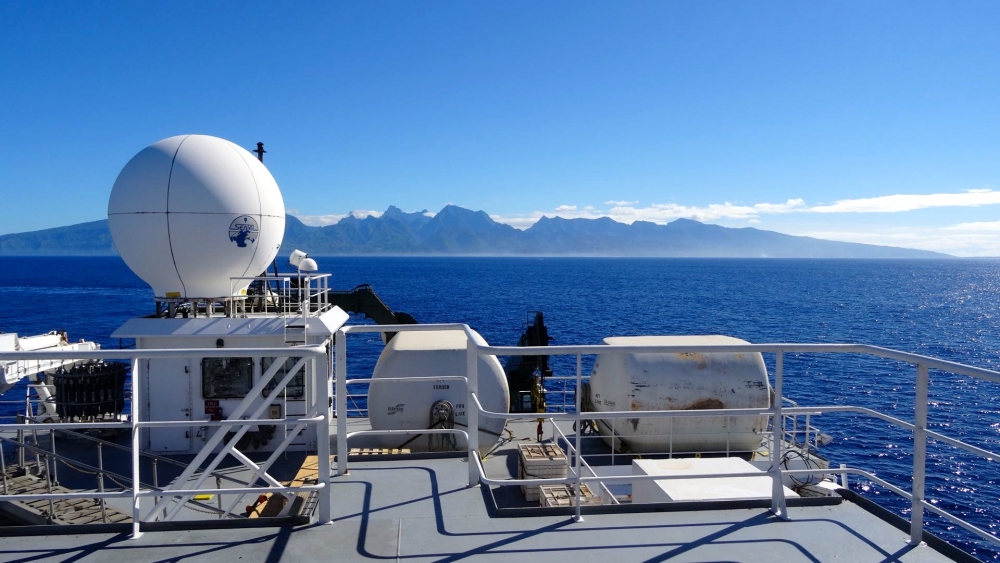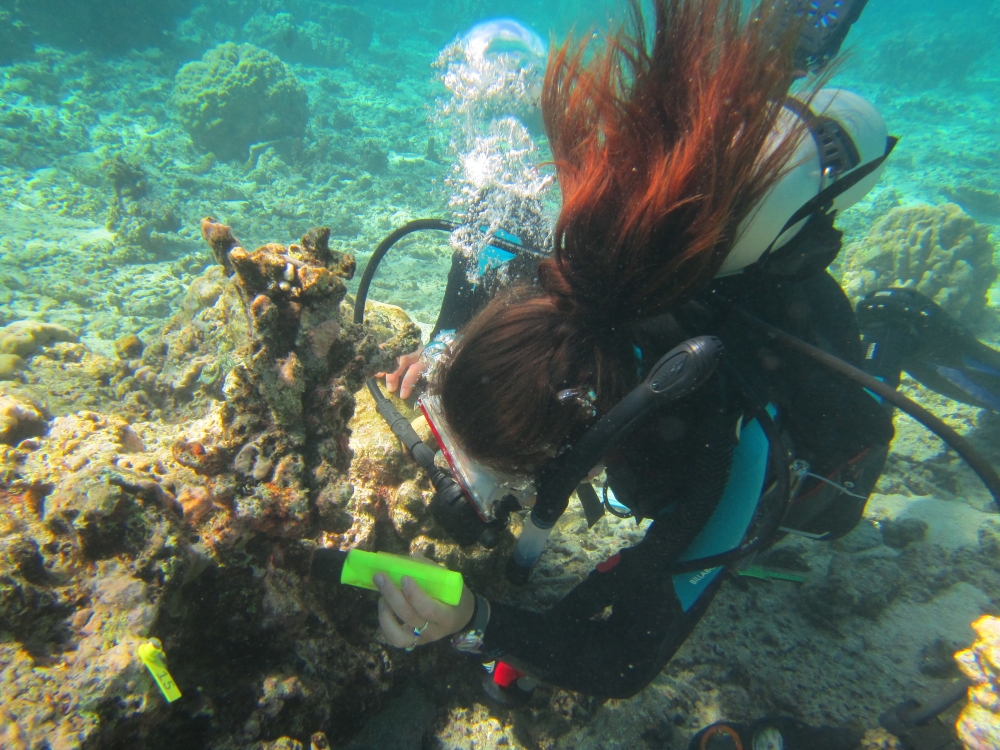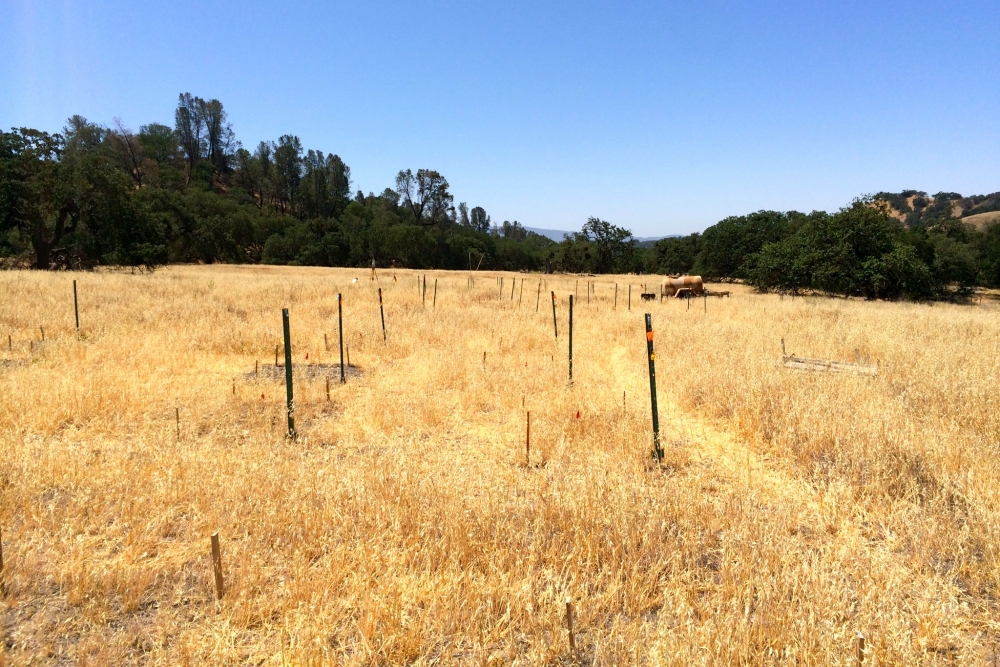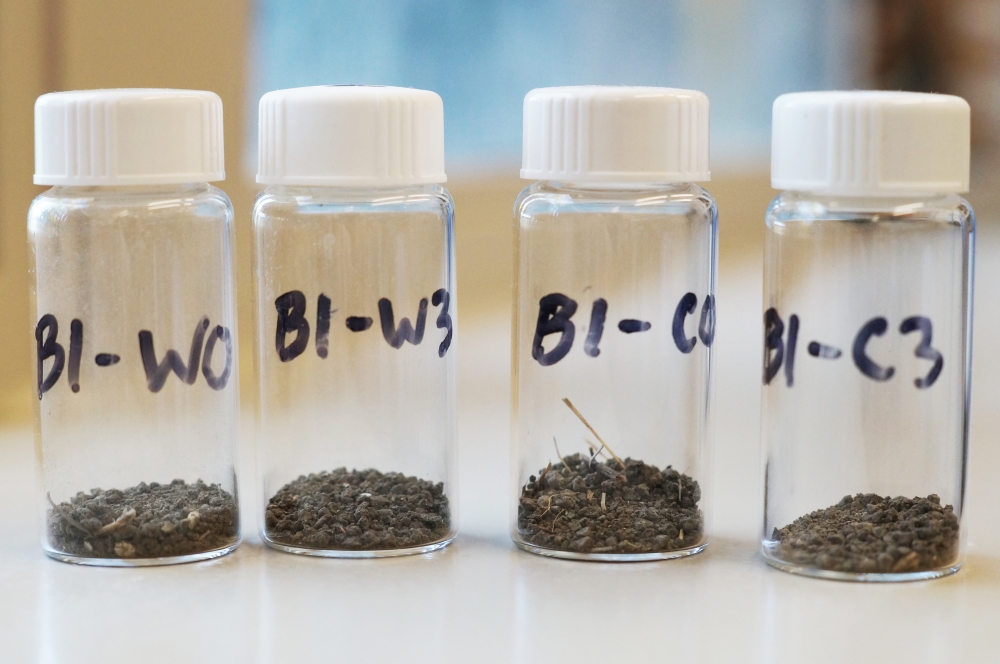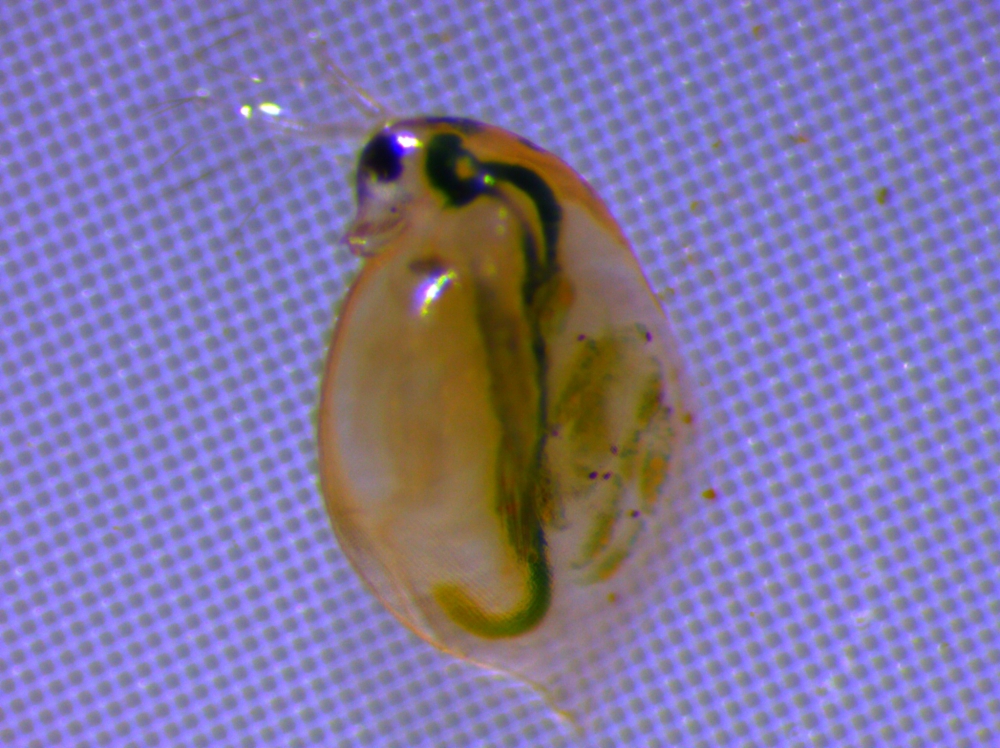Real-World Science
Henry Morse went to Tahiti while Marlene Maeusli traveled to Moorea. Jacob Weverka trekked through Kings Canyon National Park and Lauren Croshaw visited UC Santa Barbara’s Sedgwick Reserve in the Santa Ynez Valley. Not a bad way to spend a summer vacation.
These undergraduates are among a group of students who had the unique opportunity to conduct research in the field thanks to Worster fellowships.
Funded by alumni Bruce and Susan Worster, the program in the Department of Ecology, Evolution and Marine Biology (EEMB) provides stipends to teams of undergraduate and graduate students that enable them to collaborate on original research. During the summer and into the academic year the undergraduate/graduate pairs worked together on projects of their own design.
Some of the undergrads wrote senior theses based on their works or prepared posters for the 2014 Undergraduate Research Colloquium; others worked toward publishing their results in scientific journals. And all gained invaluable research skills.
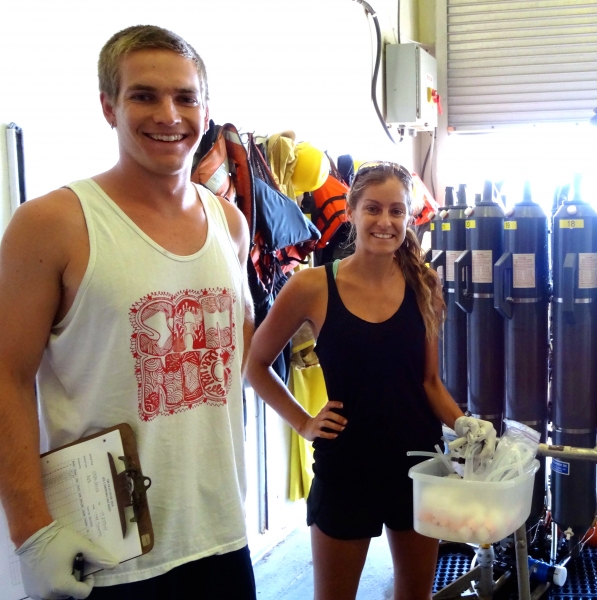 “I think it’s been the most important experience of my undergraduate education so far.”
“I think it’s been the most important experience of my undergraduate education so far.”
Henry Morse
UCSB junior
While research is often a key part of undergraduate studies, funded opportunities can be harder to find. Morse described the Worster fellowship as eye-opening and said he will always remember his trip to the South Pacific during which he discovered how much he loves the research process.
“I think it’s been the most important experience of my undergraduate education so far,” said Morse, a third-year biology major in the College of Creative Studies. “So many things came out of my project. I learned so much about the research process and discovered firsthand that research is something I want to be involved in for the rest of my life.
“I’ll be able to look back and say that if it weren’t for the Worster Fellowship, I don’t know where I would be,” he added. “It’s definitely given me the opportunity to see things a lot sooner than I would have otherwise.”
Communication is Key
Morse’s graduate student mentor, Anna James, also benefited from her involvement in the fellowship program. “It was one of the most incredible experiences of my graduate career,” said James. “You have to learn how to communicate your science, which is incredibly important. Those basic questions can be the most important ones and you don’t think about them until someone asks you.”
Improving communication skills was one of the goals Susan Worster had in mind when she approached EEMB several years ago about creating the department’s Worster fellowships. “Presenting either in the written or oral form is something most of us have to do throughout our careers,” she explained. “And doing hands-on work really gives you a full grasp of the issues and implications.”
Both she and her husband were impressed with this year’s group of fellowship recipients. “They’re very sharp,” said Bruce Worster, who noted that the undergraduate research he did proved beneficial in the job market. “The students were very enthusiastic about their research, so that was very gratifying.”
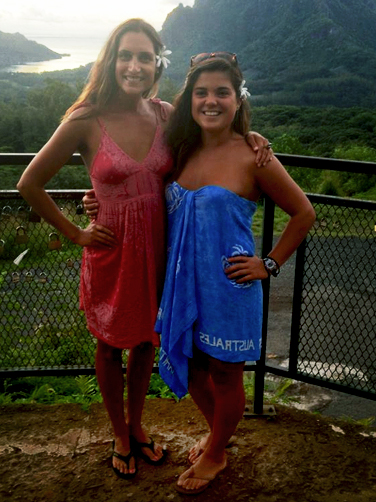 “I’ve grown a lot as a researcher and I’ve learned how to speak and write for different audiences.”
“I’ve grown a lot as a researcher and I’ve learned how to speak and write for different audiences.”
Marlene Maeusli (right)
UCSB senior
Maeusli, a senior, used her fellowship to spend the summer in French Polynesia where she and EEMB graduate student Stella Swanson studied how sea urchins indirectly affect coral recruitment. Coral recruitment is the process by which drifting coral larvae attach and establish themselves as members of the reef community.
An international student from the Netherlands, Maeusli will devote this coming summer to an internship at the Scripps Institution of Oceanography at UC San Diego where she will focus on marine biomedicine. “The Worster fellowship was a very valuable program,” she said. “I’ve grown a lot as a researcher and I’ve learned how to speak and write for different audiences — a valuable lesson that will be applicable in any field later on, whether in academic writing or in any job.”
Maeusli and Swanson didn’t know each other before they worked on the proposal for the Worster fellowship but collaborating for the past year has been an enriching experience for both. “I’ve learned a lot in this process as well,” said Swanson. “It’s been really rewarding.”
'Incredible,' 'Invaluable' Experiences
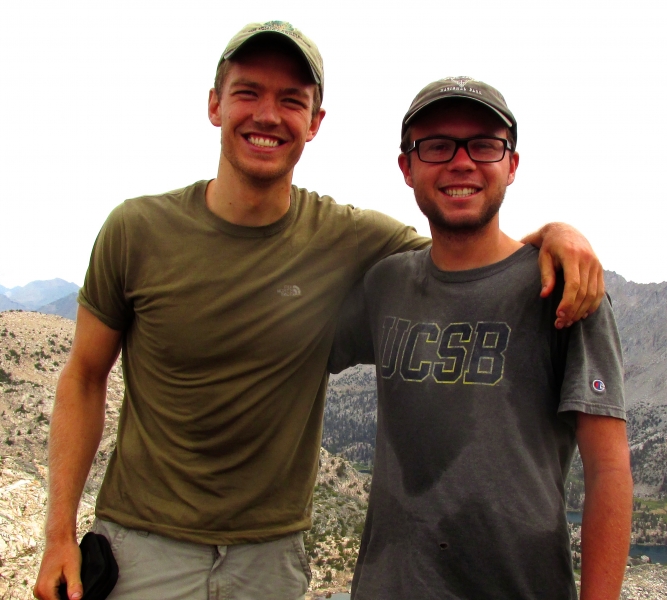 “I’d say it’s the single most valuable educational experience that I’ve had at UCSB.”
“I’d say it’s the single most valuable educational experience that I’ve had at UCSB.”
Jacob Weverka (right)
UCSB senior
Last summer, Weverka accompanied EEMB graduate student Mark Wilber to Kings Canyon National Park, where they collected invertebrate samples from lakes that contained trout as well as from those that didn’t in order to determine how the fish influence macroinvertebrate communities. Weverka, a senior, studied body-size distributions and found that bugs get larger when no trout are present.
“The insects are just not getting above a certain size when there are trout in the lake,” he explained, “and presumably that’s based on size-selective predation by the trout. They want to eat the biggest prey that they can find. While there are alternative explanations, I think that’s the most likely one.”
Both Weverka and Wilber found the Worster fellowship “incredible,” but for different reasons. “I’d say it’s the single most valuable educational experience that I’ve had at UCSB just in the breadth of what it’s taught me and in depth,” Weverka said. “It forced me to try and learn things on my own, to try things that I didn’t know how to do at the start and then figure out how to do them. So it’s been pretty awesome on the whole.”
Wilber echoed many of those sentiments. “I spent a year thinking about my own research and formulating my own questions, but it was definitely different from the top-down approach,” he said. “We sat down together and brainstormed ideas. It was fun to be able to pitch ideas in a mentor role and see Jacob run with them and elaborate on what he wanted to do with them.”
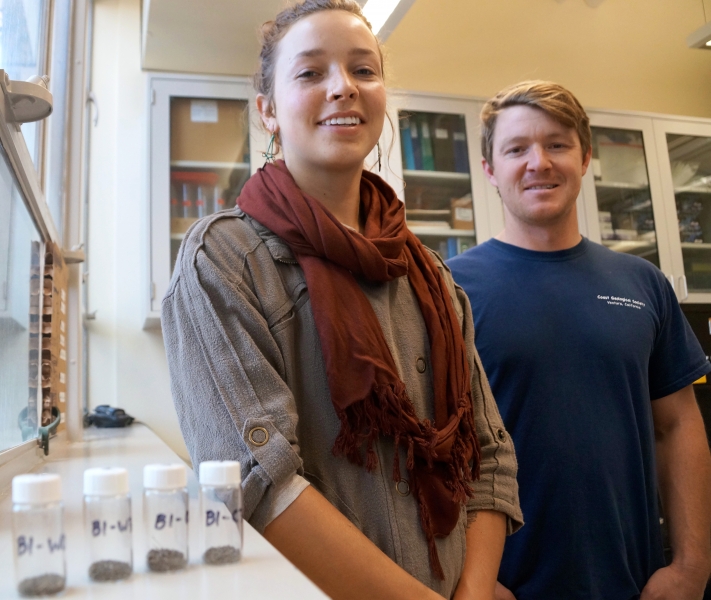 “The Worster fellowship allowed me to ... understand the project in more depth.”
“The Worster fellowship allowed me to ... understand the project in more depth.”
Lauren Croshaw
UCSB junior
Croshaw and her mentor, Ken Marchus, worked with soil samples they collected at Sedgwick, which is part of the University of California Reserve System. Their project sought to explore how microbial processes are altered by extreme wet and dry environments or conditions.
Croshaw used the gluconic acid assay to determine the origin of extracellular sugars in the samples. The assay, which had not been used in the lab before, turned out to be difficult to work with.
“I didn’t get any conclusive data,” said Croshaw, a junior, “but I learned invaluable lessons. The Worster fellowship allowed me to spend more time and understand the project in more depth so I was able to start thinking about my senior project and thesis for next year.”
The Importance of Mentorship
For his part, Marchus enjoyed mentoring. “There’s more personal fulfillment with something like this than there is being a teaching assistant. It’s really nice to have the interaction in the lab rather than in a large classroom setting. You get hands-on understanding when new skills are applied. The Worster fellowship provided Lauren with a great opportunity, especially since she’s thinking of going to graduate school.”
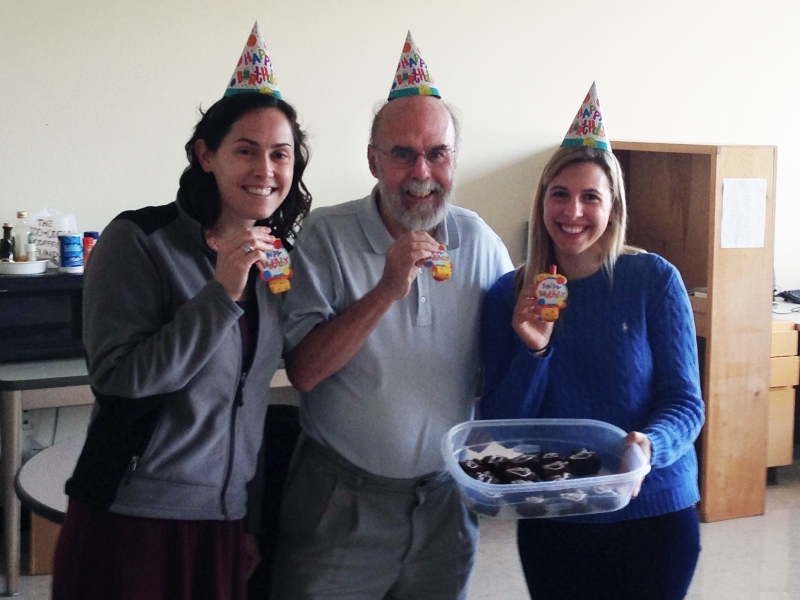 “This whole research experience in general definitely affected what I want to do in the long-term.”
“This whole research experience in general definitely affected what I want to do in the long-term.”
Katie Krattenmaker (right)
UCSB senior
Senior Katherine Krattenmaker didn’t have to leave campus for her project, which was part of a larger collaboration with University of California’s Center for Environmental Implications of Nanotechnology. She studied the effects of silver nanoparticles on the growth, survival and reproduction of individual zooplankton fed at low food levels. Daphnia, as they are called, act as indicators for ecosystem distress and are commonly used in toxicity testing.
“What I like about the Worster fellowship is that it specifically encourages mentoring relationships,” said EEMB graduate student Louise Stevenson, who mentored Krattenmaker. “The funding is helpful because it completely frees you of other obligations and gives you a lot more opportunity to focus on the work, but the grant also acknowledges that project is part of a greater effort.”
“It’s been an incredible experience,” said Krattenmaker, who will attend New York University’s College of Dentistry in the fall. There she will combine a degree in dental hygiene with study at NYU’s Bluestone Center for Clinical Research.
“This whole research experience in general definitely affected what I want to do in the long-term,” Krattenmaker said. “I will always be able to draw on what I’ve learned through the experiences made possible by my Worster fellowship.”
